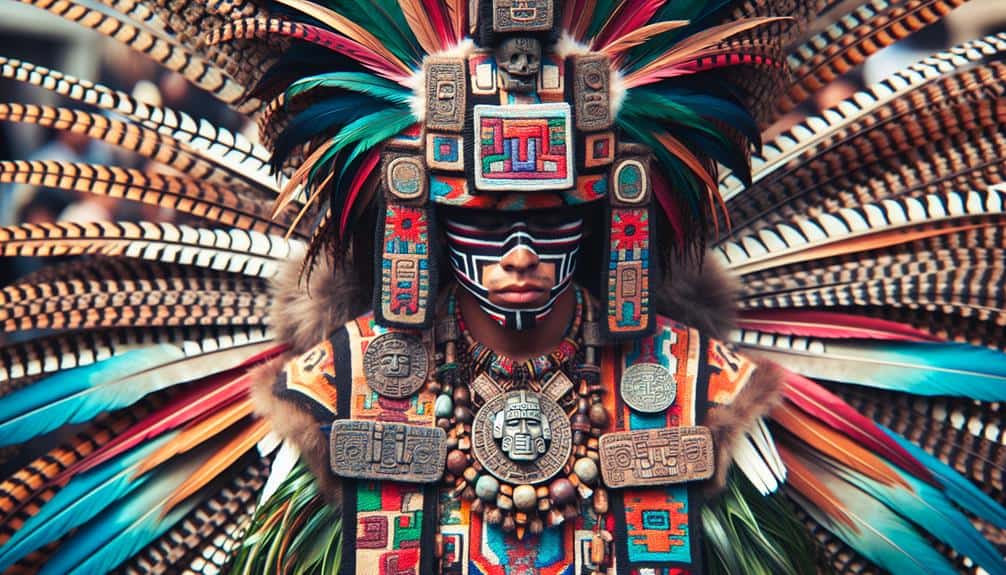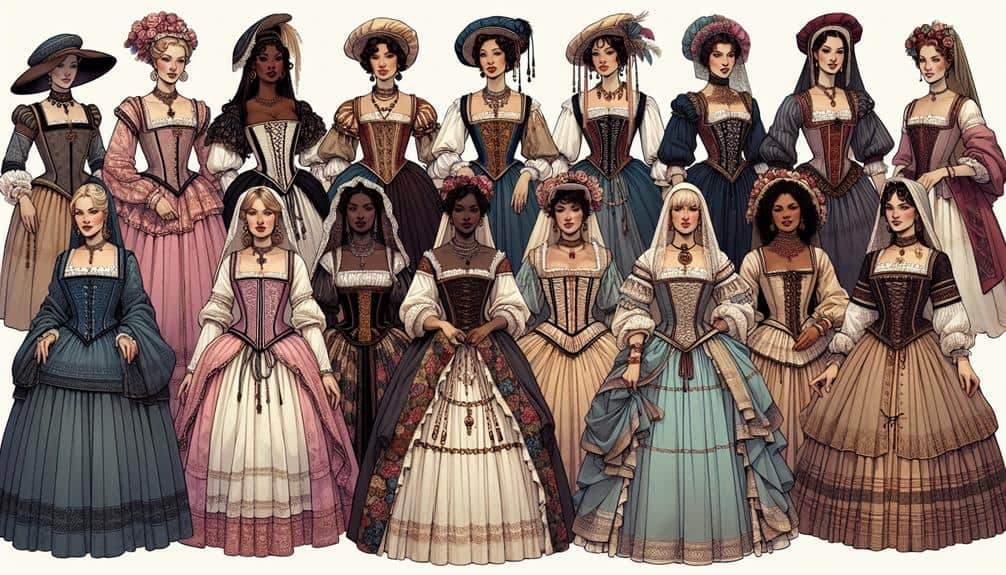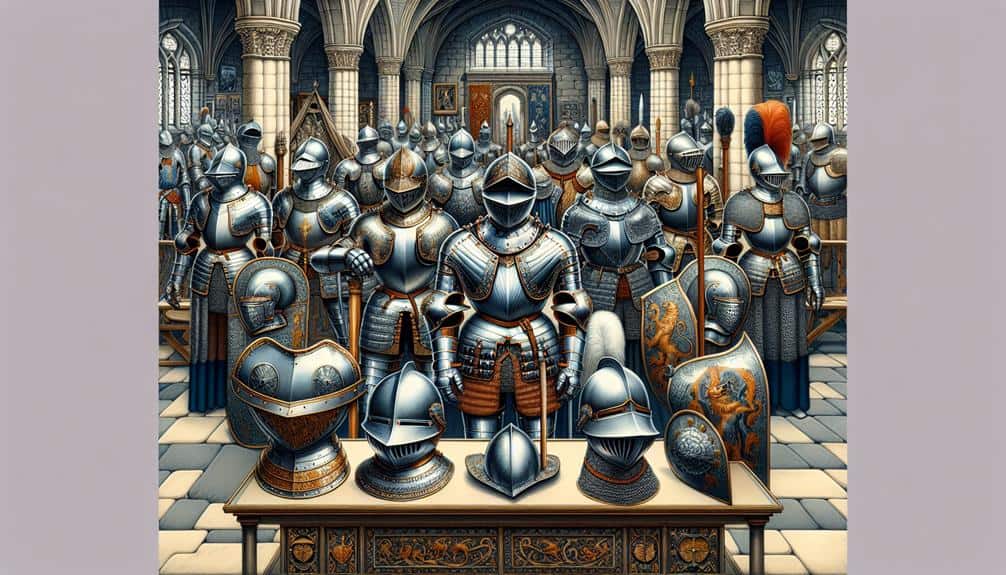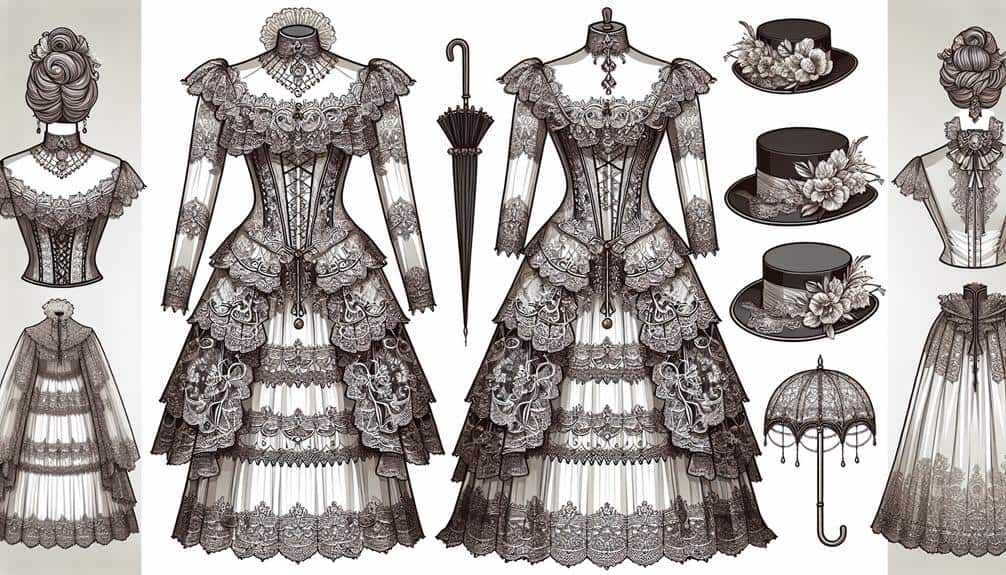Have you ever wondered why the Aztec civilization chose to don traditional garments that reflected their rich cultural heritage?
The attire of the Aztecs goes beyond mere fabric and design, hinting at a deeper connection to their beliefs and way of life.
By exploring the reasons behind their choice to wear such distinctive clothing, you can uncover a fascinating insight into the complexities of this ancient civilization and perhaps gain a new appreciation for the significance of their attire.
Key Takeaways
- Traditional Aztec garments symbolized social hierarchy and cultural identity.
- Aztec attire displayed intricate symbolism through color, motifs, and patterns.
- Practical design considerations balanced functionality and cultural expression in clothing.
- The legacy of Aztec fashion influences modern designs, combining tradition with contemporary trends.
Aztec Clothing: Historical Significance
Explore the historical significance of Aztec clothing to understand the cultural depth of this ancient civilization. Clothing played a crucial role in Aztec society, serving as a form of cultural expression and reflecting the complex social hierarchy of the time. The garments worn by the Aztecs weren't merely practical items but were intricately woven with symbolism and tradition, highlighting the values and beliefs of this civilization.
In Aztec society, clothing was a way to signify one's social status and role within the community. Different classes and ranks within the Aztec hierarchy were distinguished by the type of clothing they wore, with elaborate designs and materials reserved for the nobility and simpler attire for the commoners. This emphasis on clothing as a marker of social standing reinforced the hierarchical structure of Aztec society and underscored the importance of maintaining order and respect within the community through visual cues.
Symbolism in Aztec Attire
Symbolism intricately weaves through the fabric of Aztec attire, embodying profound cultural, historical, and spiritual significance within each garment. The Aztecs utilized their clothing as a canvas to convey symbolic meanings and artistic expressions, reflecting their beliefs and societal structures.
Here are some key symbolic elements found in Aztec attire:
- Color Symbolism: Different colors held specific meanings in Aztec culture. For example, red symbolized blood and life, while blue represented sacrifice and divinity.
- Animal Motifs: Garments often featured intricate animal designs such as eagles, jaguars, and serpents, symbolizing power, strength, and spirituality.
- Geometric Patterns: Geometric shapes like circles, squares, and diamonds were commonly used in Aztec clothing to represent different aspects of the natural world and the cosmos.
- Featherwork: Feathers were highly valued and used in clothing to symbolize status, power, and connection to the divine.
These symbolic elements combined in Aztec attire not only served ornamental purposes but also communicated deeper cultural and spiritual meanings, making each garment a rich tapestry of artistic expression.
Practicality of Aztec Outfits
The intricate symbolism found in Aztec attire not only conveyed deep cultural and spiritual meanings but also had practical implications in the daily lives of individuals within the civilization. Aztec clothing struck a delicate balance between comfort and fashion, as garments needed to be functional for the wearer while also reflecting the aesthetic sensibilities of the society. The Aztecs valued durability alongside style, as their clothing had to withstand the demands of their active lifestyle while still being visually appealing.
The practicality of Aztec outfits extended beyond mere adornment; their clothing was designed to accommodate the diverse activities and environments in which they engaged. The materials used in Aztec garments were carefully chosen for their ability to withstand the rigors of everyday life, ensuring that individuals could move freely and comfortably while still presenting themselves in a culturally significant manner. This emphasis on both practicality and style showcases the thoughtful integration of form and function in Aztec attire.
Cultural Identity Through Garments
In understanding Aztec civilization, the garments worn by individuals serve as a vital reflection of their cultural identity. The Aztecs utilized clothing not only for practical reasons but also as a way to showcase their cultural heritage and societal roles. Here's how garments played an essential role in expressing Aztec cultural identity:
- Symbolism: Aztec garments were intricately designed with symbols representing their beliefs, social status, and roles within the community.
- Materials: The fabrics and materials used in Aztec clothing were often sourced from nature, reflecting their connection to the environment and their traditions.
- Color Palette: The vibrant colors used in Aztec clothing weren't just for aesthetic purposes but also held symbolic meanings related to their cosmology and spirituality.
- Evolution of Fashion: Over time, Aztec fashion trends evolved, showcasing changes in societal norms, rituals, and influences from neighboring civilizations.
Through their clothing choices, the Aztecs communicated their cultural heritage and adapted to changing fashion trends, providing insights into their way of life and values.
Influence of Aztec Fashion Today
Influencing contemporary fashion trends, Aztec garments continue to inspire designers worldwide with their rich cultural heritage and intricate designs. The influence of Aztec fashion can be seen in modern designs through the use of bold geometric patterns, vibrant colors, and intricate embroidery reminiscent of traditional Aztec attire. This global impact is evident in fashion shows, retail stores, and street style, where elements of Aztec fashion are incorporated into clothing, accessories, and even home decor.
Designers draw inspiration from Aztec textiles, headdresses, jewelry, and footwear, adapting these elements to create unique and modern pieces that pay homage to the ancient civilization. The global popularity of Aztec-inspired fashion highlights the enduring appeal of the culture's aesthetics and craftsmanship. Through the fusion of traditional Aztec motifs with contemporary trends, designers are able to create pieces that resonate with a wide audience, transcending cultural boundaries and fostering a deeper appreciation for the artistry and legacy of the Aztec civilization in today's fashion landscape.
Frequently Asked Questions
Did Aztec Garments Vary by Social Class or Occupation?
In Aztec society, garments did vary by social class and occupation. Social hierarchy influenced the style and quality of clothing, while specific attire for different occupations reflected practicality and status. Remember, "clothes make the man."
Were There Any Specific Rules or Customs Regarding the Wearing of Aztec Clothing?
In Aztec society, specific rules and customs governed the wearing of clothing. These guidelines were influenced by social status, ceremonial practices, and spiritual significance. Garment production involved intricate techniques, cultural exchange, and material sourcing.
How Did Aztec Clothing Influence Other Mesoamerican Cultures at the Time?
Explore how Aztec clothing, like a vibrant tapestry, interwove with neighboring Mesoamerican cultures. Through cultural exchange, fashion trends transcended borders, shaping artistic expression. Influences of Aztec garments radiated, imprinting a legacy of style.
What Materials Were Commonly Used in the Making of Aztec Garments?
Materials like cotton, agave fibers, and animal skins were commonly used in Aztec garments. Textile techniques like dyeing and weaving showcased their craftsmanship. Decorative patterns reflected their cultural beliefs and social status, creating a rich tapestry of clothing.
Did the Aztecs Have Any Specific Rituals or Ceremonies Related to Clothing and Attire?
In Aztec culture, clothing symbolism played a critical role. Garment decorations held religious significance and were intricately designed for ceremonial attire. Specific rituals and ceremonies were dedicated to the creation and wearing of these sacred garments.



